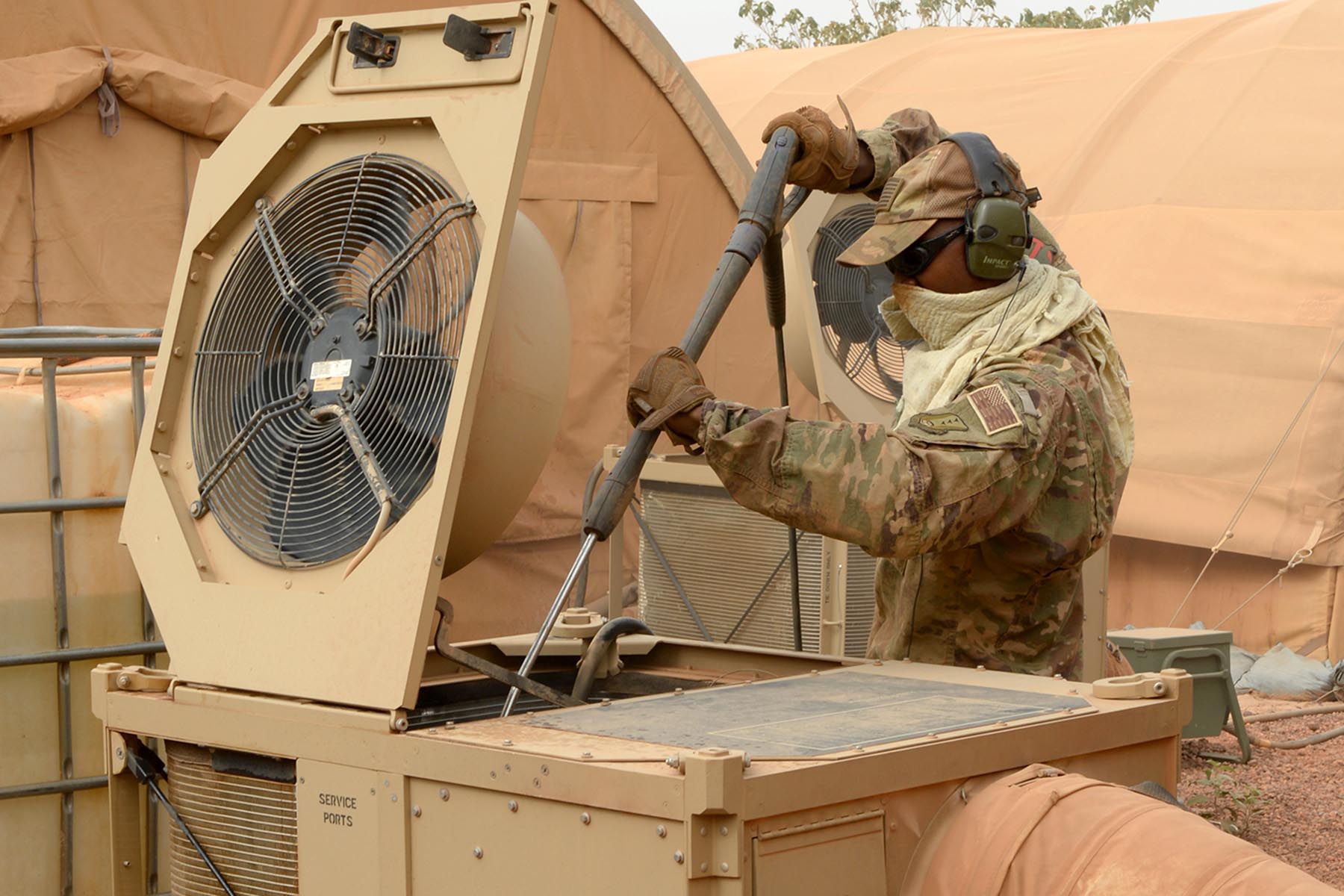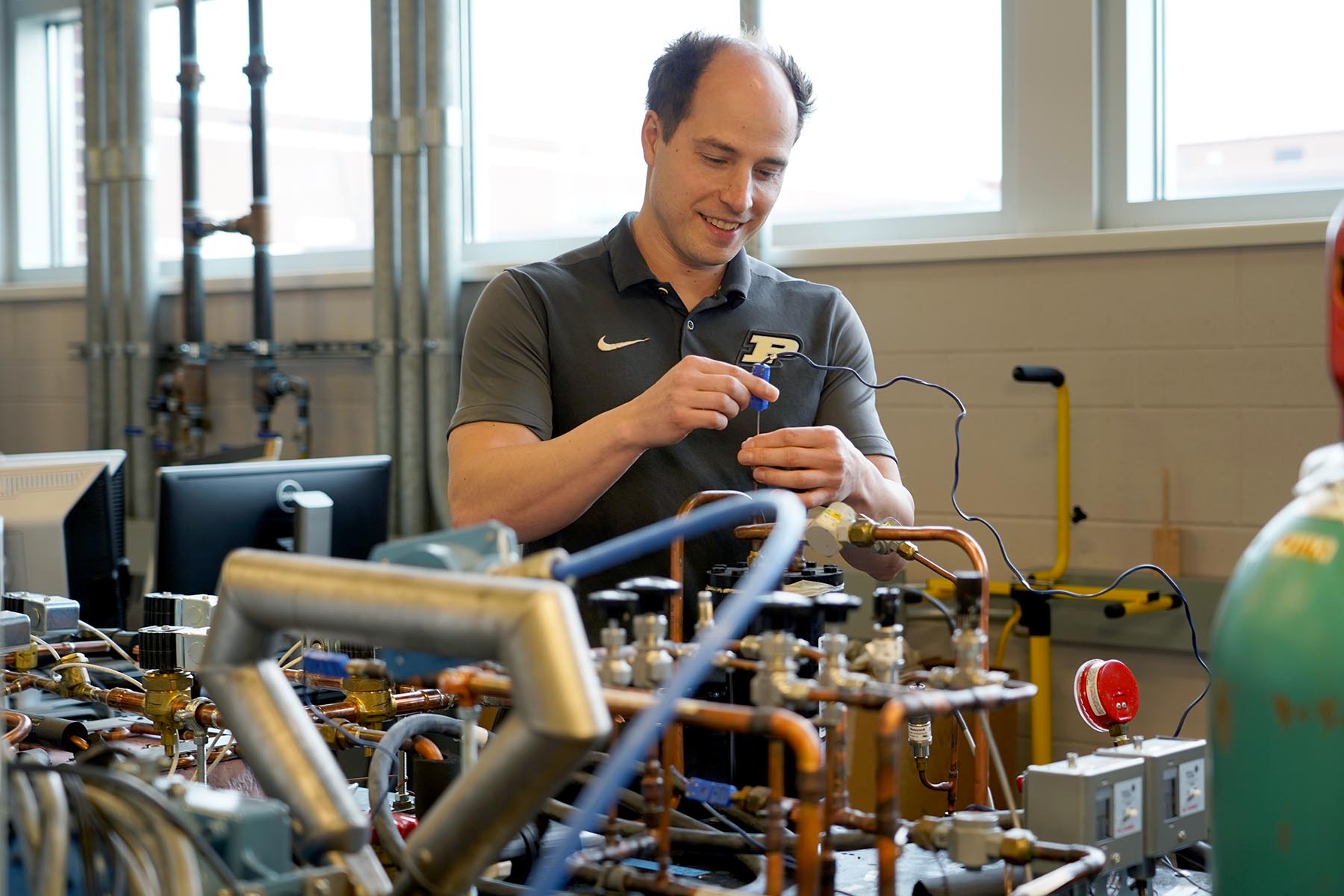Air-conditioning the battlefield

“The DOD has a big problem to solve,” said Davide Ziviani, Assistant Professor of Mechanical Engineering, and Associate Director of the Center for High Performance Buildings. “They have thousands of vehicles with traditional air-conditioning systems, like those used in your car or truck. But military vehicles face unique situations, where current systems might pose an increased challenge on the battlefield. One of our goals is to find refrigerants that are both environmentally friendly, and safe to operate in combat.”
Ziviani is leading a team that has received a three-year, $1.9 million grant from the Strategic Environmental Research and Development Program (SERDP), a program designed to increase the Department of Defense’s environmental resilience.
“Here at Purdue, we have the largest academic HVAC lab in the world: Herrick Labs,” said Ziviani. “We are constantly researching the latest refrigeration and air-conditioning systems, so we are perfectly set up to tackle this challenge.”
One unique feature of Herrick Labs is its psychrometric chambers, large rooms where air-conditioning and heating systems can be put through their paces. These chambers simulate the extreme conditions that military vehicles might encounter, from arid deserts and humid jungles to polar winters. Two of Herrick’s psychrometric chambers have been specially built to test flammable refrigerants and other specialty systems that can’t be tested elsewhere.
The other aspect that makes Purdue the perfect choice for this niche of research is Zucrow Labs, the largest academic propulsion lab in the world. “Steve Son has one of the few academic labs in the world devoted to Energetic Materials,” said Ziviani. “He can safely simulate situations where these systems are exposed to fire, explosions, and other military-style threats.”
Additional project partners include Eckhard A. Groll; and a team from the National Institute of Standards and Technology (NIST), Ian Bell and Mark McLinden.
While the initial work will focus on air-conditioning in vehicles, Ziviani sees their solutions as being applicable to a broad range of situations. “We start with the fundamentals, and then work our way to specific applications,” said Ziviani. “As we develop environmentally friendly and efficient solutions, they can be applied to trucks, boats, aircraft, and even remote bases and building installations.”
Purdue University has a long history of collaboration with the Department of Defense, hosting the Midwest Regional Research Hub of the Air Force Research Laboratory, and launching the Purdue Institute for National Security to empower its multiple partnerships in national defense. Purdue’s two-pronged approach to this specific issue – enhancing efficiency and sustainability – is also at the core of the Center for High Performance Buildings, where Ziviani serves as Associate Director. His work was recently recognized by the American Society of Heating, Refrigerating and Air-Conditioning Engineers (ASHRAE) with their New Investigator Award, granting Ziviani $125,000 over three years to develop novel heat pump technology.
“At Purdue, I’m privileged to work on refrigeration technologies that are both energy-efficient and high-performance,” said Ziviani. “I’m excited for this collaboration, so that we can also introduce systems that keep our soldiers safe.”

Writer: Jared Pike, jaredpike@purdue.edu, 765-496-0374
Source: Davide Ziviani, dziviani@purdue.edu
